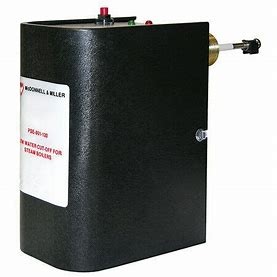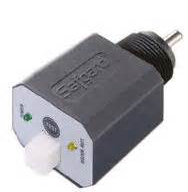Testing Steam Boiler LWCO's
Testing Float Style LWCO
I have been asked many times through the years what the proper way to test a float-type low water cut-off (LWCO) is. Early in my career, which has now spanned over 43 years, I was taught the improper way of testing float-type LWCOs. A float-type LWCO typically features a valve at the bottom to flush the float, enabling cleaning and ensuring proper operation. When flushing the LWCO, the rapid release of water flushed dirt from the float chamber of the LWCO.
Below are two distinct types of float type LWCO's manufactured by McDonnell Miller.


This is required every week or two, depending on the manufacturer's directions. This would be done by opening the yellow handle until the water runs clear. This usually lasts about 5-10 seconds or slightly longer. If you do this while the boiler is running, it should shut down as the float drops when the water is quickly evacuated.
While this will shut the boiler down, and many technicians believe this is the proper way to test a float-type LWCO, it is not.
The reason is that, as the water evacuates quickly, it is not how the boiler will operate during normal operation.
During the boiler operation, the water level will drop slowly, not quickly. Thus, the float could hang up when the level drops slowly. The proper way to test the float-type LWCO is to drain water from the bottom of the boiler slowly and gradually. As the water drops slowly instead of quickly from the float chamber, there is a better chance to determine if the LWCO will shut the boiler down. It simulates the normal operation of the boiler.

In the above picture, you can see a float-type LWCO and a hose on a drain to lower the water level slowly to test the LWCO.
Testing Probe Style LWCO
The float type LWCO is still in use, but the more standard is the probe type electronic LWCOs. These do not require flushing, and there is no way to flush them. Contrary to belief, these also require annual maintenance. Remove the probe annually and wipe it clean, or follow the manufacturer's directions for cleaning.
McDonnell Miller PSE-801 Hydrolevel 1100 Hydrolevel CG450



These are tested the same way, lowering the water level slowly from a boiler drain with a hose connected to the bottom of the boiler.
Disclaimer: The information found on this website is for informational purposes only. All preventive maintenance, service, and installations should be reviewed on a per-job basis. Any work performed on your heating system should be performed by qualified and experienced personnel only. Comfort-Calc or its personnel accepts no responsibility for improper information, application, damage to property, or bodily injury from applied information found on this website, as it should be reviewed by a professional
